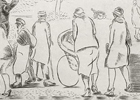 Burin engraving on metal
Burin engraving on metalBurin engraving (German Stich, French gravure au burin) is the oldest variety of engraving on metal. The engraver employs sharp burins to apply a design to the surface of a metal (most often copper) plate. Then the burr is carefully removed from the plate with a burnisher, and a roller is used to apply ink so that it fills the grooves; next, the engraver carefully wipes the ink away from plane areas and makes a print.
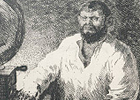 Etching and its varieties
Etching and its varietiesEtching (Dutch etsen, from German atzen to etch, corrode, from Old High German azzen) is an engraving technique in which the chemical treatment of the plate by acid replaces the mechanical treatment with different engraving tools. The method gained currency in the late 16th century.
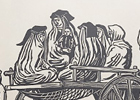 Linocut
LinocutLinocut (from ‘linoleum’ and ‘woodcut’) is a variety of engraving in which a pattern is cut on a sheet of inoleum or other polymeric material and then printed on a paper. Invented in the early 20th century, the method is in many ways similar to xylography. It is one of the simplest relief printing techniques.
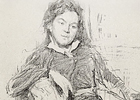 Lithography
LithographyLithography (from Greek lythos – ‘stone’ and grapho – ‘to draw’) is a printmaking method using a stone with a smooth surface; normally it is considered a variety of engraving (although it does not employ engraving methods). The name explains the method – in translation from Greek, it means “I draw on a stone”.
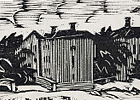 Xylography
XylographyXylography is a variety of printmaking in which an image is carved into the surface of a block of wood. The process involves cutting a design on a wood block, covering it with ink and making impressions on a paper or similar material. The varieties of xylographic engraving include oodcuts nd onal reproduction) engravings. The method of xylography was introduced in Western Europe in the late 14th century, and tonal xylography, where a print is produced using several blocks, – in the 15th century.
|
|
Galleries |
|
